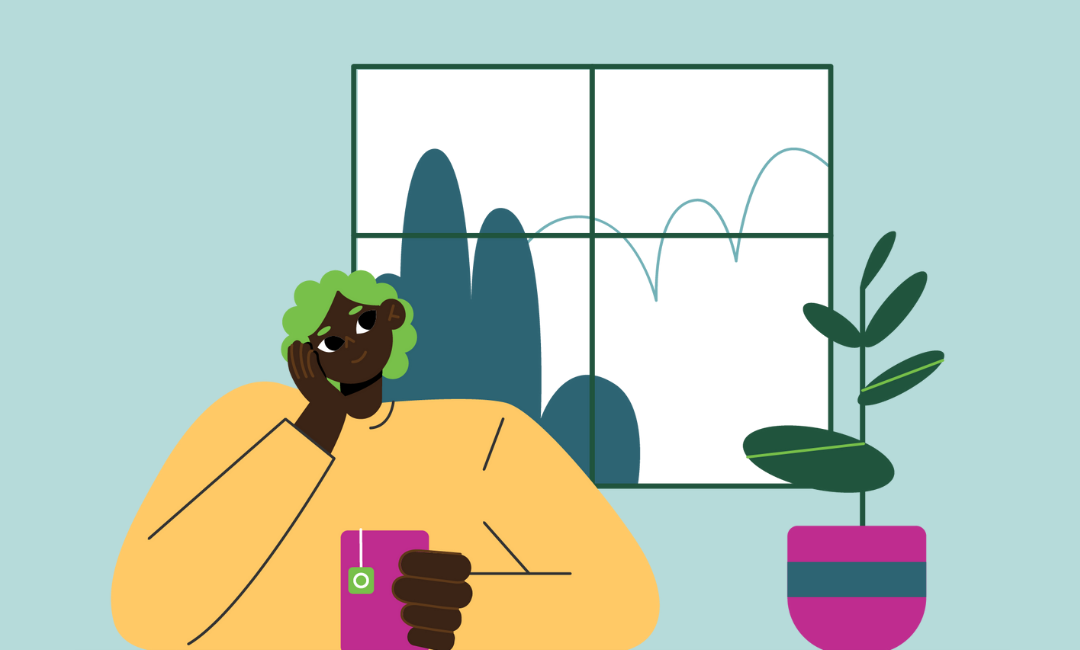
Decrease Anxiety When Working from Home
Mar 20
/
D du Bois

Working from home sounds like bliss. It sounds like a lot of coffee, lounging on the couch, PJ’s for days and a whole lot of chilling. But imagine not being able to quickly chat with your colleagues while making a cup of coffee, or not being able to pop in next door to chat about the big project or a task you’re stuck on. No one is around you and no one knows or sees how hard you’re working. There is no physical human contact during your workday. You suddenly feel isolated and feel the need to overcompensate, working longer hours or taking less breaks during the day. You feel bad for the freedom or flexibility that comes with working from home, but you can’t explain why you feel this way. Your anxiety is higher than it’s ever been, but you have no idea how to deal with it or how to make it better. These feelings are all normal so no need for more stress. Just like FOMO, there is an actual term for these feelings – it’s called “WFH Guilt” for short or “Work from home guilt” which Kaila Kea talks about in her Glassdoor blog.
I am part of the remote work force and because of my own experiences with this I put together 7 ways to help you decrease your work from home guilt and anxiety and assist you to create a great remote working environment.
Create a good workspace
People underestimate how much their work environment can affect them both physically and mentally. Just because you’re working from home doesn’t mean you should work in bed every day. Therefore, it’s important to create a working environment that boosts you, both physically and mentally. Create a workspace that you would WANT to spend 8-9 hours a day in, where you can focus, be creative and most importantly, be comfortable.
Get up, get out of bed and get dressed
As we mentioned before, working from home is often mistaken for a heavenly place where you stay in bed or lay on the couch in your PJ’s and drink coffee all day… While this sounds amazing, it’s not quite accurate and not how it should be. It may be fine to do this for a day or 2 but in the long run it will have a negative affect on your productivity, your lifestyle and most importantly your mental health. It is imperative to get up, get out of bed and get dressed every morning. You don’t have to wear your full corporate outfit; you are still home and can wear anything comfy. It is important however to get into this routine to help with your motivation, productivity, focus and changing your mindset from “home time” to “work time”. Lauren Geall, a contributor for Stylist has posted an interesting article explaining the psychology behind this.
Do a daily “scrum”
I can already see the confusion on your face… Not to worry, I went through the same confusion when I first came across the term… A “scrum” is a summary of the work/tasks/projects that you’ll be working on today, tomorrow and the rest of the week. You need to post or share this scrum with your team daily so that they have a holistic view of your capacity for the coming week. At the end of the day you’ll need to update your scrum by ticking off the work/tasks/projects that you completed, make notes and comments on those you haven’t finished and remember to add new work/tasks/projects that may have come in that day. Your scrum is a way of cultivating good and open communication with your team, letting your boss know exactly what’s on your plate so you don’t need to worry about getting that phone call…
Create a list of priorities for yourself
You’ll need to try and identify when the best time of the day is for you to complete your tasks that require more focus, thinking or creativity than other tasks. At our company we call these times “Hamburger time”. Don’t forget to also make some “Chips time” too… This is where you check emails, internal messages, check in with your team etc. These times are also important in order to give your brain a bit of a rest.
With the above concept in mind, go through your scrum and assign a priority to each task you need to complete for the day. Think about which one of the tasks require more focus to complete when assigning priorities and when you’d like to complete those. By doing this you’re taking a lot of extra thinking out of the day and decreasing anxiety too.
It’s OK to take breaks
Yes, you read that right. A common mistake and cause for increased anxiety is the misconception that because you work from home you should take less breaks. Quite the opposite applies when working from home. Keep in mind that you are home, a familiar place where you spend a lot of your time already, so it is important for your mental health to take breaks often during the day. Go for fresh air, go for a quick walk in the garden or sit in the lounge for a few minutes reading a magazine. Don’t underestimate a change of scenery when working from home and don’t feel guilty about it either. Liz Presson, contributor for themuse has highlighted 4 times you should sign off.
Check in several times a day
Checking in with your boss several times a day is a really good way to decrease anxiety throughout your workday. I know what you’re thinking… How can it possibly decrease anxiety? Well if you think about it like this – if your boss never has to wonder what you’re up to or what you’re working on and doesn’t need to call you every 5 minutes to check if you are working, wouldn’t that automatically make you feel a whole lot better in general?
Be prepared
We live in South Africa and as South Africans we are used to obstacles like load-shedding by now. Hence, it’s important to be prepared for any eventuality that may occur in your workday when working from home. Be it a power failure, no internet or WIFI etc.
We live in South Africa and as South Africans we are used to obstacles like load-shedding by now. Hence, it’s important to be prepared for any eventuality that may occur in your workday when working from home. Be it a power failure, no internet or WIFI etc.
- Make sure your PC is always charged so that it has some life left in case anything happens.
- Find a place close to home with WIFI that’s on a different electrical grid to you so that when load shedding strikes you have somewhere to go with power and WIFI.
- Make sure that your office is set up for the next day’s work already so that when you walk in the next morning you don’t need to panic about setting up, plugging in etc.
It’s important for you to remember that when you work in an office, there are plenty of rules and regulations put in place and designed to assist you with your health and wellness at work. When working from home, it’s up to you to keep up those rules and regulations in order to keep yourself happy, healthy and anxiety free.
Resources used for supporting facts in this article:
https://www.forbes.com/sites/laurelfarrer/2019/04/12/are-home-offices-fueling-a-mental-health-crisis/#5d0732963ea3
https://www.glassdoor.com/blog/work-from-home-guilt/
https://www.stylist.co.uk/life/working-from-home-tips-get-dressed-never-wear-pyjamas-stay-productive-psychology/368185
https://www.themuse.com/advice/separating-work-from-life-3-habits-for-remote-workers
https://www.themuse.com/advice/working-from-home-4-times-you-should-sign-off


